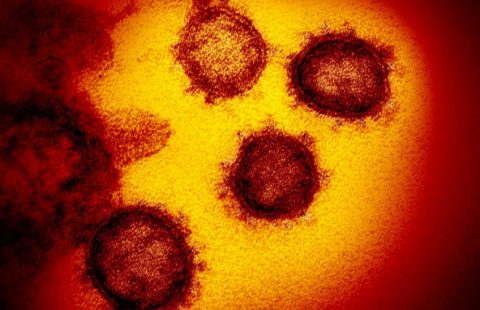
In developed countries, 4% to 16% of children under 18 are physically abused. © Adobe Stock
Diagnosing physical abuse in infants can be difficult. To assist health care professionals, guidelines defining what to do in case of suspected physical abuse have been produced by learned societies, public authorities, and independent expert groups. Despite this reference framework, differences in management have been observed between practitioners, both in France and in other developed countries. To try to understand this phenomenon, researchers from Inserm and teacher-researchers from Université de Paris at the Center for Research in Epidemiology and Statistics (CRESS), the Paris hospitals group AP-HP and Nantes University Hospital analyzed and compared different clinical guidelines published in 15 countries. They have discovered substantial differences between countries and even within countries where several reference documents sometimes coexist. The findings of this systematic review highlight the need for an international consensus process in order to produce clear and standardized guidelines to optimize the practices of health care professionals. These findings have been published in JAMA Network Open.
Physical abuse affects 4% to 16% of children under the age of 18 in developed countries and around one third of diagnoses of such abuse are made late. Infants under two years of age are the most affected, which adds to the difficulties of rapid diagnosis based on a combination of clinical and social assessments, imaging examinations, and laboratory tests.
Several previous studies revealed discrepancies in the practices of health care professionals when physical abuse is suspected. A French study published in 20151 showed, for example, that in the theoretical case of a 9-month-old infant presenting with femoral fracture, multiple bruising, and a head injury, only 28% of the pediatricians surveyed would have requested a skull MRI, despite it being recommended following a CT scan within this context of potential inflicted injury.
Faced with this observation, and in an attempt to understand these differences between practices, the study looked at guidelines intended to assist health care professionals in diagnosing child physical abuse. These guidelines, accessible online, were produced by learned societies, health agencies, and pediatric expert groups, and include documents written by the French National Authority for Health (HAS), the UK Royal College of Paediatrics and Child Health, and the American Academy of Pediatrics.
The scientists extracted the data from 20 reference documents published between 2010 and 2020, by 15 of the 24 most developed countries according to the United Nations. They compared the diagnostic examination guidelines in the event of suspected child abuse, determining for each examination whether it was routinely recommended, conditional (on a case-by-case basis depending on the clinical context), not recommended, or not even mentioned.
Discrepancies between reference documents that create gray areas
According to the study findings, the international guidelines vary widely, which could explain some of the differences between the clinical practices observed in the diagnosis of child physical abuse.
While some examinations, such as skeletal X-rays, are recommended across the board, others are recommended on a case-by-case basis or not at all, depending on the country. For example, a bone scan – an imaging examination used to look for fractures in addition to skeletal X-rays – is recommended by the HAS and the American Academy of Pediatrics but not by the Royal College of Radiologists. Within the UK, the Royal College of Radiologists and the Royal College of Paediatrics and Child Health differ in their recommendation for the use of this scan.
The researchers also saw significant differences in the definition of “sentinel injuries,” – injuries found in infants who have not acquired the ability to move on their own and which require assessment for physical abuse. While all the documents analyzed propose a description of these injuries, the content differs: six give a brief description and focus solely on skin lesions, while ten also refer to intra-oral, intracranial and abdominal injuries, and fractures.
Finally, the researchers found that some of the elements frequently mentioned in the guidelines did not appear in all of them. For the researchers, even investigations that are not recommended should be mentioned in all of the documents, if only to explain to the practitioner why they are not recommended.
“Our objective was to systematically examine the completeness, clarity and consistency of the clinical guidelines for the early detection and diagnostic work-up of child physical abuse. We felt that, in the developed countries, the authors of guidelines theoretically all have access to the same knowledge and that all practitioners have the possibility to prescribe the same examinations. As such, there should be little variation between the examinations recommended for suspected child physical abuse and those actually carried out. We did not expect to identify such great disparities between the guidelines. We believe that these differences may partially explain the absence of the standardization of practices,” explains Flora Blangis, first author of the study and doctoral student at Inserm.
“Our objective was to systematically examine the completeness, clarity and consistency of the clinical guidelines for the early detection and diagnostic work-up of child physical abuse. We felt that, in the developed countries, the authors of guidelines theoretically all have access to the same knowledge and that all practitioners have the possibility to prescribe the same examinations. As such, there should be little variation between the examinations recommended for suspected child physical abuse and those actually carried out. We did not expect to identify such great disparities between the guidelines. We believe that these differences may partially explain the absence of the standardization of practices,” explains Flora Blangis, first author of the study and doctoral student at Inserm.
According to the researchers behind this systematic review, the findings highlight the need for an international consensus process in order to produce clear and standardized guidelines to optimize the practices of health care professionals in the diagnosis of child physical abuse. Such an approach has been carried out in many other areas of medicine, particularly for the screening of hypertension.
“Primary care physicians and pediatricians are key players in the early detection and diagnosis of child physical abuse. They should be able to base their decisions on guidelines that are clear, comprehensive, and consistent, as is the case with other diseases,” concludes Blangis.
Standardizing practices2 is an issue that is all the more important given the serious consequences that incorrect diagnosis can have on a child’s health. In particular, false negative results expose infants to a risk of recurrence of abuse estimated as being between 35% and 50%.
1 Ledoyen A, Bresson V, Dubus J-C, et al. Explorations complémentaires face à une situation d’enfant en danger : état des lieux des pratiques en France en 2015. Arch Ped. 2016
2 Deployment throughout France of Pediatric Reception Units for Children at Risk (UAPED) should help to standardize practices in the diagnosis of abuse and the care pathway for abused minors. This is a strong focus of the plan to combat violence against children decided upon by the Ministry of Solidarity and Health and supported by the French Society for Forensic Pediatrics.
These contents could be interesting :


